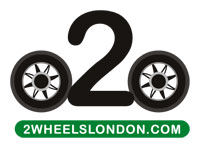Safety first, last and always – Part III
Riding a motorbike safely requires great skill, good judgement, concentration and street smarts.
Sounds simple – but we also know it’s easy to make silly mistakes that can prove deadly. Crashes happen, but what’s so sad is that most can be avoided with just a few simple changes to our riding techniques.
In this short series we’ll look at some of the principal reasons for bike crashes, and the types of roads they occur on, based on statistics from the Department for Transport. In Parts I and II we looked at country roads, junctions, filtering and overtaking. Here, shunts and road conditions.
Shunts
Shunts are when bikers run into the back of other vehicles, or they run into us.
They are caused by riding too close to the vehicle in front, or the vehicle behind you being too close.
The best way to protect yourself in front is to remember that the vehicle you are following could stop quickly at any time, and for reasons you may not realise. A child out of your line of sight could cross their path, forcing them to slam the brakes on.
If that happens, are you far enough back to allow yourself time to stop safely?
Try the elephants rule: pick a prominent landmark on the road ahead and when the vehicle you are following reaches it, say ‘one elephant, two elephants’ until you reach it too.
You should never be more less than ‘two elephants’ from the vehicle in front in dry conditions; in the wet, make it four.
But what if the vehicle behind is too close?
You can’t tell him to pull back – though it would be nice to – so the best alternative, if the law allows and it is safe to do so, is to open the throttle slightly to increase the gap.
If they persist, and it’s unsettling, indicate and when safe, pull over to give them room to pass you.
Ditch the ego about being passed: it’s the biker who comes off worse if we’re clipped from behind.
Road Surface Conditions
Dealing with different road conditions is one of the key challenges of safe motorbike riding. Even the most experienced rider can take a tumble if he or she is riding in poor weather conditions; wet or icy roads can be difficult to handle, so watch your speed.
Other things to be wary of include potholes, fuel spills on the road, mud, raised manhole covers and painted road markings. Avoid puddles if you can: not only can they lose you traction on the road but they could be masking a deep hole.
Check out the road ahead for clues to potential hazards. Big building sites will mean a lot of lorries coming and going: have any leaked diesel on the road? Farms mean tractors: have they left mud on the road?
Always give yourself sufficient time and space on the road ahead to spot the hazards and deal with them.
Finally, your tyres are the only things gripping the road. Make sure they are in good condition and are always at the correct pressure.
